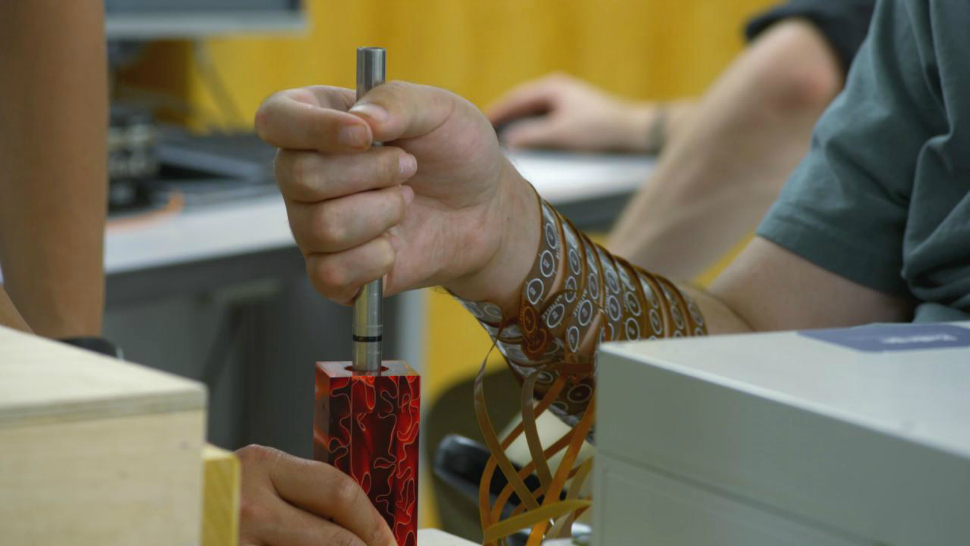John Tolley, November 26, 2016
Ian Burkhart has a hole in his head. And that?s a good thing.
?We implanted a microchip in part of his brain that controls his movements, specifically his arm movements,? explains Dr. Ali Rezai, director of the Neurological Institute at The Ohio State University Wexner Medical Center.
The microchip is accessed via a port located on Burkhart?s head. Through this port, the microchip feeds brain signals to a computer that uses machine learning algorithms to decode the information. The information is then sent to a specially designed sleeve that allows Burkhart to move his hand. That?s not something he can usually do.
?Just after finishing my freshman year of college, I took a mistimed dive in the ocean and I immediately knew something was wrong,? says Burkhart. ?I was diagnosed quadriplegic.?
That accident left Burkhart with slight use of his arms, but no control over the fine motor movements of the hand. Coincidentally, it was around the same time that Rezai and his colleagues at Wexner and the Battelle Memorial Institute were pondering how they could improve the quality of life for those affected by spinal cord injuries.
?This is a collaboration among a very large team,? notes Rezai. ?We?ve been working together for the past five years trying to advance this technology. Physicians, neuroscientist, clinicians, software and coding specialist all working together to allow for the first time in the world a quadriplegic who has no function in his hand the capability to move his hand under control of his mind.?
Currently, the team?s work is dependent on wires and thus bound to the lab - albeit one that is named for Burkhart. But progress is being made on a system that will be completely wireless, allowing Burkhart to field test the technology in his home.
For his part, Burkhart is happy to shoulder the burden and risk inherent in pioneering a technology that may not be perfected in his lifetime. For him, the project is about something much bigger.
?This is something that I?m not only doing just for me. I took this risk because I want to help push the ball further on this research and help future generations in their everyday lives.?







